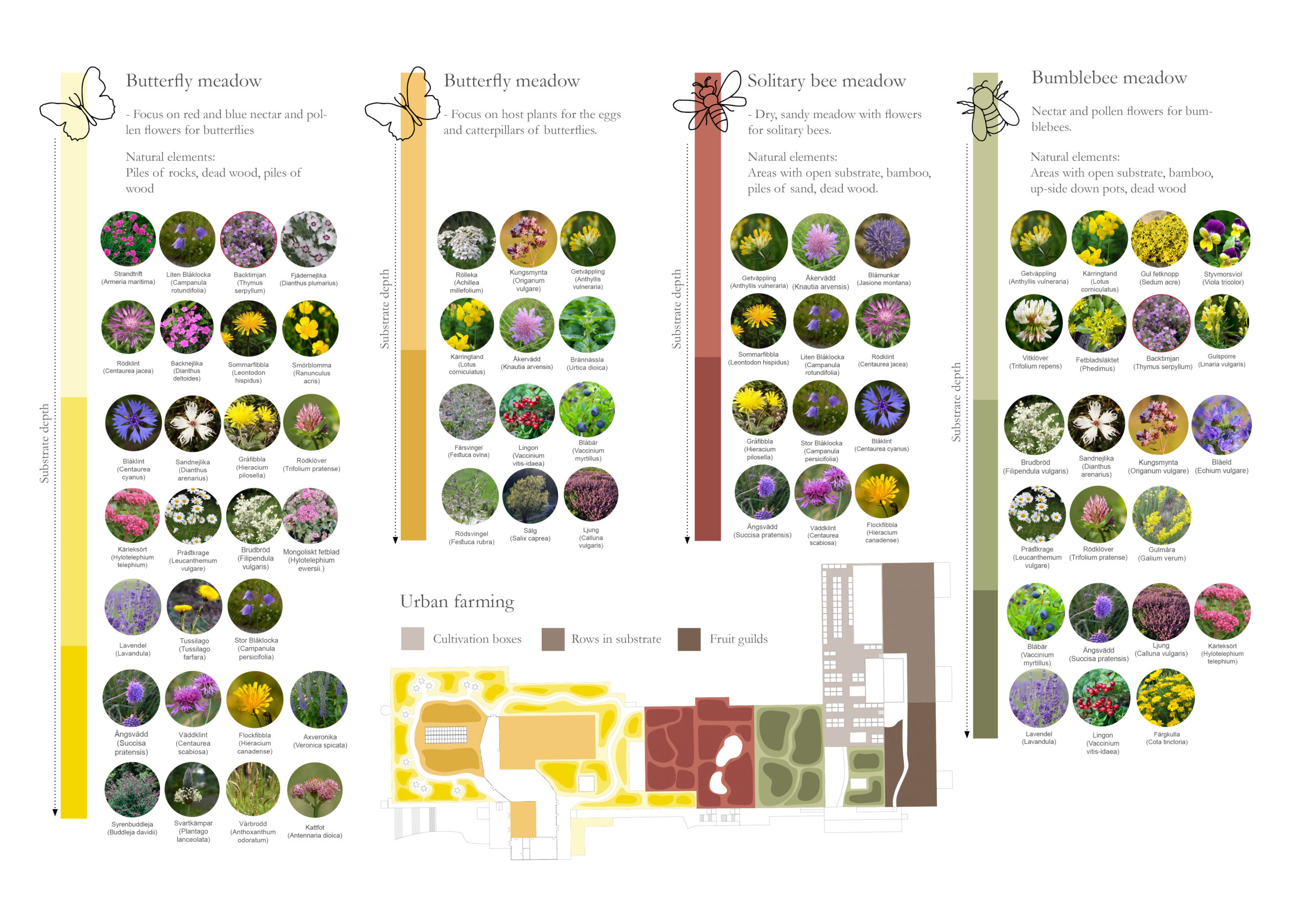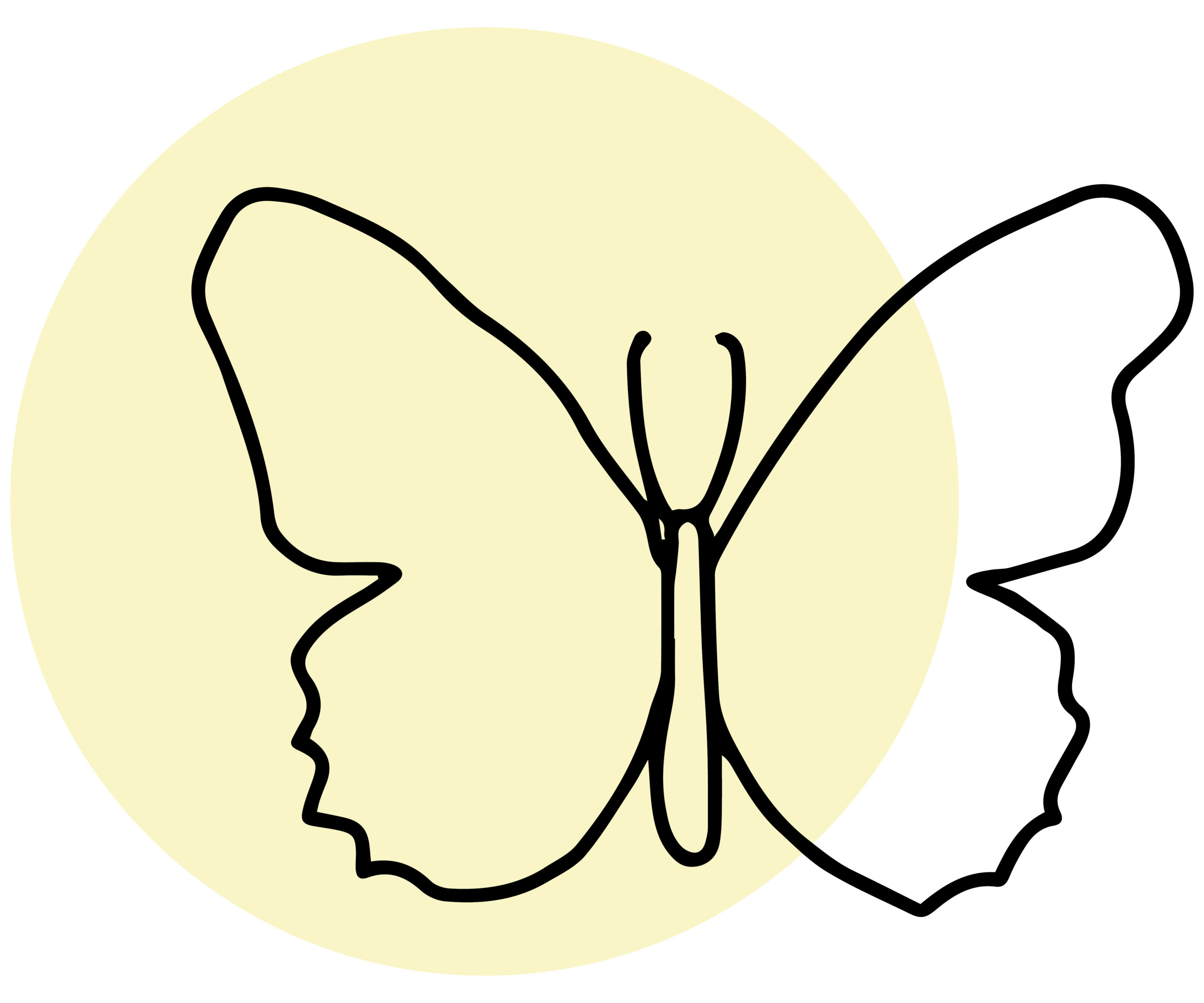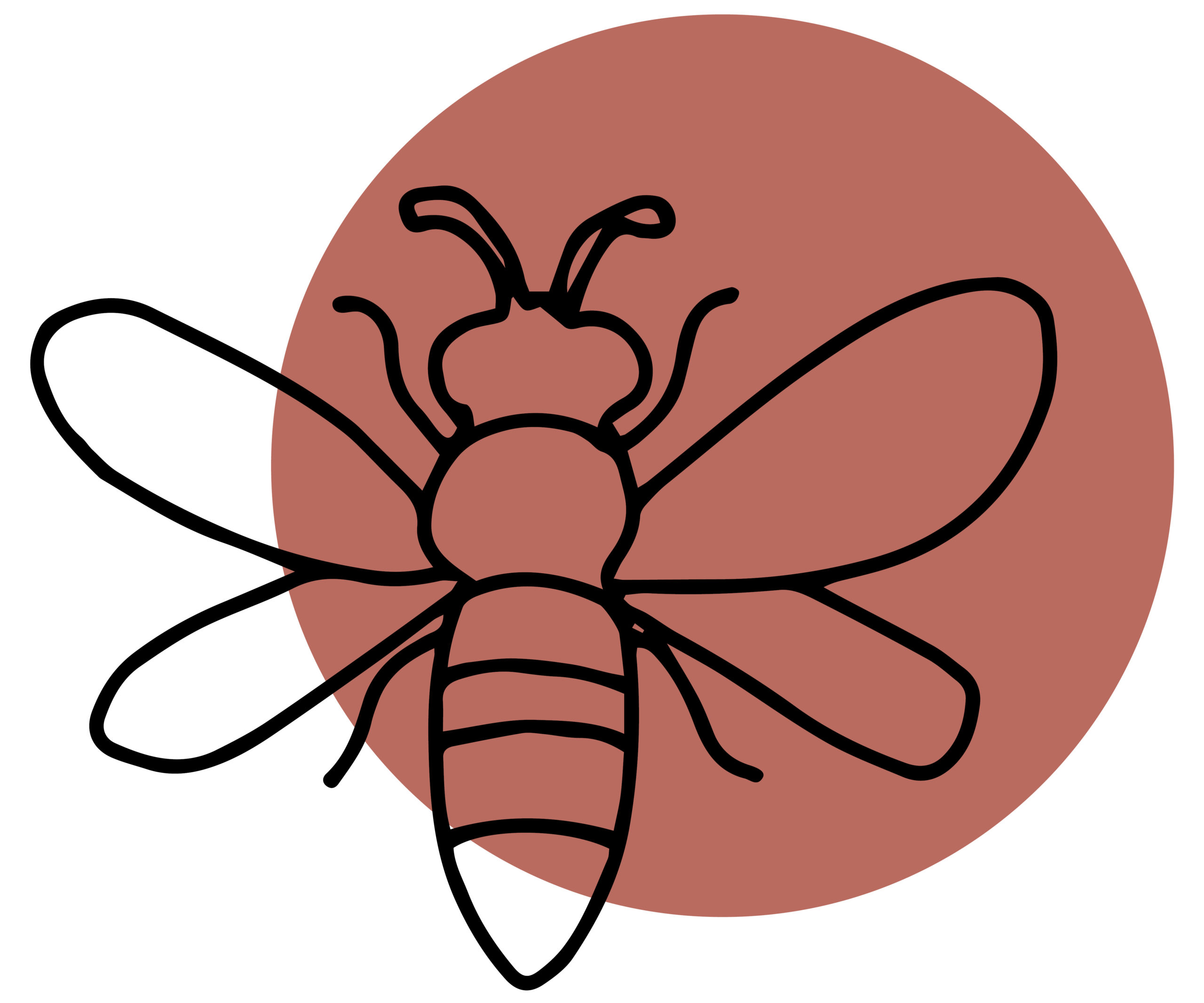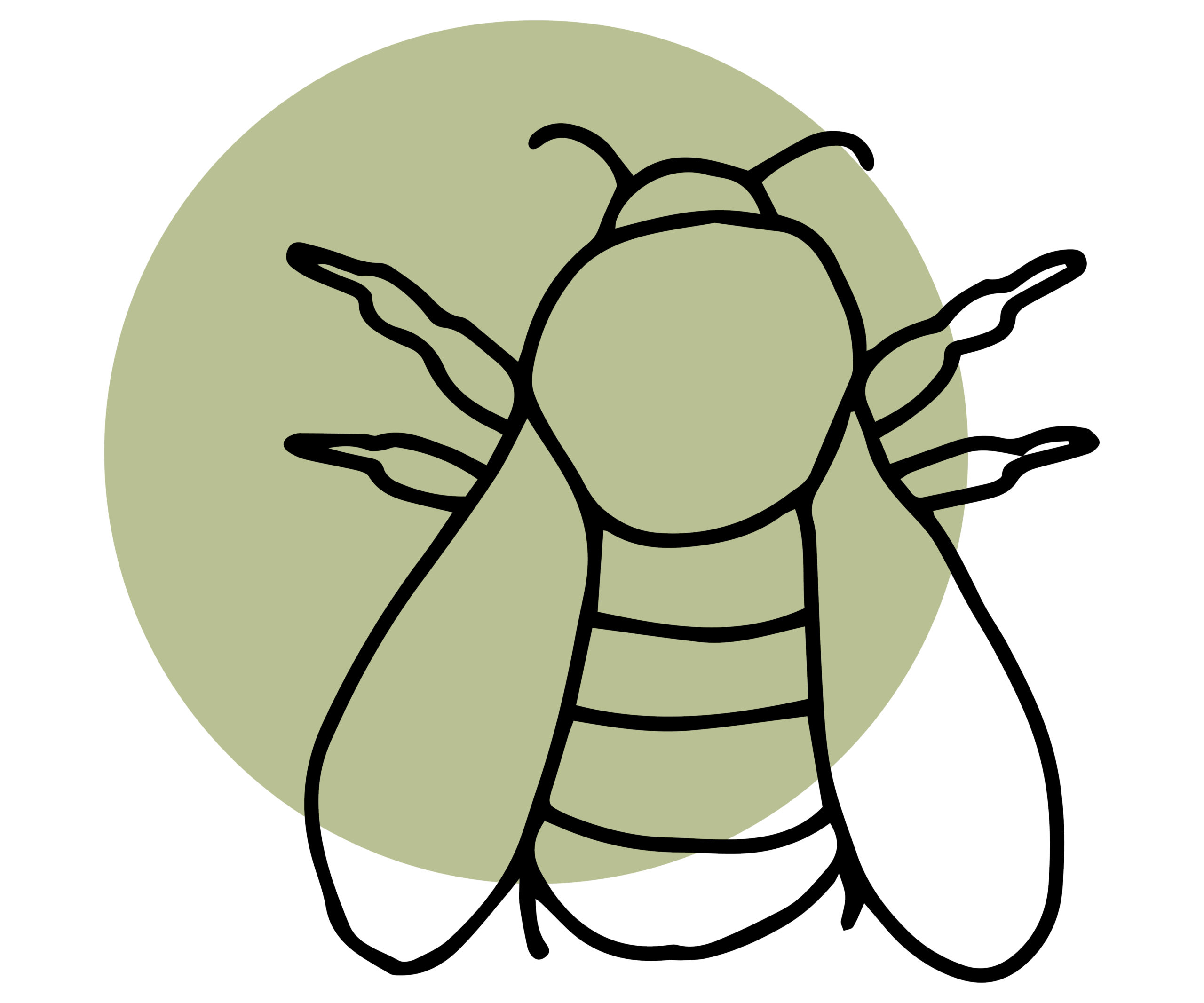THE MEADOWS


Butterfly meadows
Since different butterfly species requires specific host plants to lay their eggs in and for the caterpillars to eat from, it is impossible to cover all relevant species on one single roof. The butterfly meadows therefor puts focus on the Silver spotted skipper, the small blue, the common brimstone and the peacock butterfly. To benefit more species of butterflies, there are also some general host plants on the meadow that can cover many different species. The meadow with a focus on the fully developed butterfly is more general with a focus on red and blue flowers for nectar and pollen. Since the butterflies lays their eggs on the host plants their need for natural elements such as piles of rocks, dead wood and piles of wood are more relevant to their hybernation during winter.

Solitary bee meadows
The main focus on the wild bee meadows is to promote solitary bees, and especially the Small Scabious mining bee. Many solitary bees are depending on specific host plants to gather pollen from, but can collect nectar from other flower families as energy for flying. Many of the solitary species are mining bees, which means that they dig out their nest in earth or sand and lay their eggs in tunnels and branches in the ground. Some of the wild bees also create their nest in elements such as bamboo sticks and dead wood.

Bumblebee meadows
The needs of the bumblebees are often more general and similar between the different species. The flowers needed are depending on the lenght of their tounge, where the bumblebbes with short tounges are visiting flowers with short corollas. The white clovers (Trifolium repens) is an example of an important flower with a short corolla. Bumblebees wake up early in the spring and fly for a long time during autumn, and is therefor depending on a large variations of flowers during the season. They prefer to create their colonies in dark and warm places.